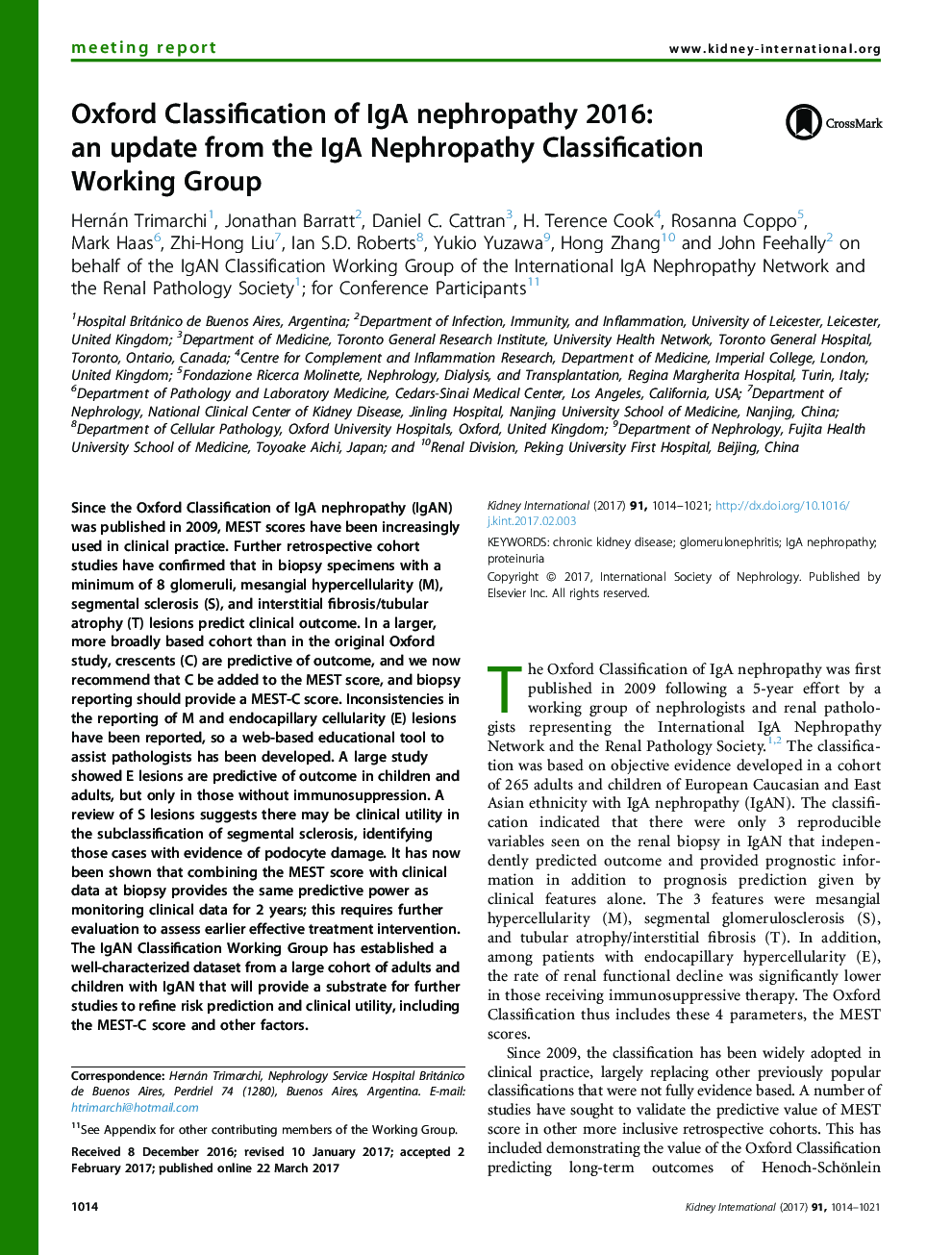| Article ID | Journal | Published Year | Pages | File Type |
|---|---|---|---|---|
| 5688487 | Kidney International | 2017 | 8 Pages |
Abstract
Since the Oxford Classification of IgA nephropathy (IgAN) was published in 2009, MEST scores have been increasingly used in clinical practice. Further retrospective cohort studies have confirmed that in biopsy specimens with a minimum of 8 glomeruli, mesangial hypercellularity (M), segmental sclerosis (S), and interstitial fibrosis/tubular atrophy (T) lesions predict clinical outcome. In a larger, more broadly based cohort than in the original Oxford study, crescents (C) are predictive of outcome, and we now recommend that C be added to the MEST score, and biopsy reporting should provide a MEST-C score. Inconsistencies in the reporting of M and endocapillary cellularity (E) lesions have been reported, so a web-based educational tool to assist pathologists has been developed. A large study showed E lesions are predictive of outcome in children and adults, but only in those without immunosuppression. A review of S lesions suggests there may be clinical utility in the subclassification of segmental sclerosis, identifying those cases with evidence of podocyte damage. It has now been shown that combining the MEST score with clinical data at biopsy provides the same predictive power as monitoring clinical data for 2 years; this requires further evaluation to assess earlier effective treatment intervention. The IgAN Classification Working Group has established a well-characterized dataset from a large cohort of adults and children with IgAN that will provide a substrate for further studies to refine risk prediction and clinical utility, including the MEST-C score and other factors.
Related Topics
Health Sciences
Medicine and Dentistry
Nephrology
Authors
Hernán Trimarchi, Jonathan Barratt, Daniel C. Cattran, H. Terence Cook, Rosanna Coppo, Mark Haas, Zhi-Hong Liu, Ian S.D. Roberts, Yukio Yuzawa, Hong Zhang, John Feehally,
